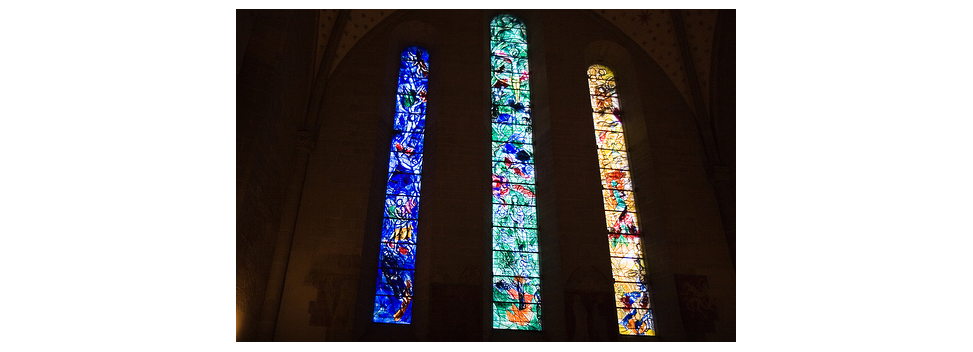Cathedral Windows Of Marc Chagall
BELARUS -- Marc Chagall was a very versatile artist. Having worked in the realm of painting, printing, sculpting, ceramics, graphics, tapestry, mosaics, glass architecture, and everything in between, he can quite aptly be described as a proper Renaissance Man.
"Only love interests me, and I am only in contact with things that revolve around love."
-Marc Chagall
Chagall was born Moishe Shagal in 1887 in Vitebsk, Belarus, which was then part of the Russian Empire. Not coming from an artistic background himself, it wasn't until secondary school that he was exposed to any kind of art at all. It made such a profound impression on him that he soon decided he would make it his calling in life.
He studied at first under the tutelage of Jehuda Pen, who ran his art studio in young Marc's very own hometown of Vitebsk. He later continued his studies in St. Petersburg and eventually Paris, France, where he was introduced to Cubism and other styles of the avant-garde movement.
The First World War brought him back to Russia, where he married and further established himself and his reputation, taking up the position of commissar of arts in his hometown and opening the Vitebsk Arts College, while his work was exhibited in Moscow. It was during this time that he began implementing religious themes into some of his art, such as murals about prayer, and creating illustrations for Yiddish books. Upon his return to France after the war, he was hired to create etchings and lithographs for the Old Testament. Later in life he expanded into large-scale art forms.
His most memorable legacy to us comes in the form of his brilliantly colored stained glass windows (portions of the windows seen in the photo) which are displayed in cathedrals around the world, including those in the Fraumunster church in Zurich, Switzerland.
"All colors are the friends of their neighbors and the lovers of their opposites."
-Marc Chagall
These five 32 foot tall, 3 foot wide (or nearly 10 meters tall, 0.91 meters wide) windows were built when Chagall was 80 years old. Three in front, and two more flanking the walls to the left and the right, their red, yellow, green, and blue colors complimenting one another, they tower over the viewer as he or she enters the chamber. They are unusual for church stained glass windows. The classic themes which one would expect are all there – Bible figures, angels, but are done in a completely innovative way. One immediately notices that they are unmistakably Cubist in nature – different from the conventional church design. There is something amazingly warm and inviting about the rich colors, which are indescribable when the sunlight shines its power into them from behind and washes over you. You feel as if they were truly meant to bring, through color and light, as close an interpretation of the Holy Spirit as can be conveyed to human visual senses.
Other locations where Marc Chagall's had been commissioned to design stained glass windows include churches in Germany and The United Kingdom, Hebrew University's Hadassah Medical Center in Jerusalem, and the United Nations building in New York.
Photo courtesy of Betty Reed http://www.flickr.com/photos/bettyreed/346056012.








